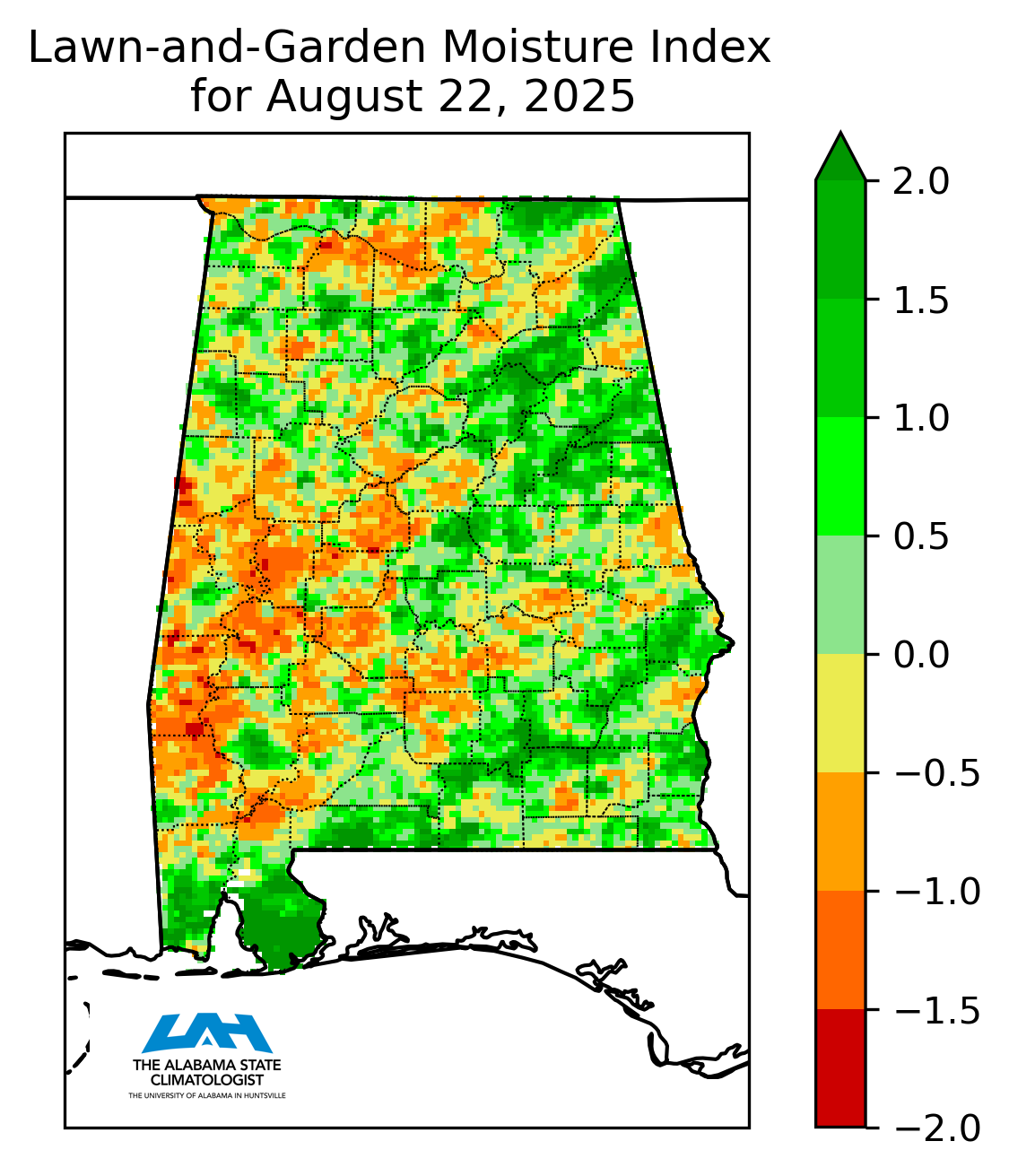The Most Recent Lawn/Garden Moisture Index for the State of Alabama
|
...providing specific weather data forthe state and for the world. |
...providing specific weather data forthe state and for the world. |
|
Copyright (c) 2012 The Alabama State Climatologist |

